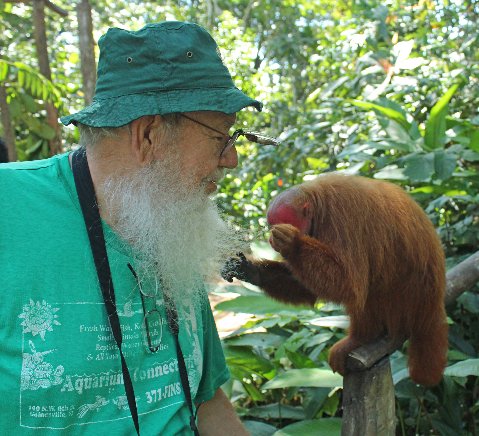
You go to the campground and the frogs will be at the pond. Of course, the fact that the campground and pond were a couple of thousand miles west of home in Colorado complicated the search for a while. But then on a late summer day I decided to make the drive and search for the frog.
"The frog" was a high elevation population of wood frogs, the ones that were once known as
Rana maslini. They were dark of color, somewhat warty, a little short-legged and squatty, but overall they were quite pretty -- or at least interesting.
Although wood frogs are widely distributed from Labrador and Newfoundland to northeastern Georgia to northwestern Alaska, in the continental west they are found in only a few small montane populations in CO, adjacent WY, northern WY, and northern ID.
The fact that they were geographically isolated and seemingly genetically incompatible with other populations prompted systematists of the day to name them
Rana maslini. It was later found that they could interbreed successfully with other populations of wood frogs and this led to
Rana maslini being considered a synonym of
Rana sylvatica. With today's concept that the ability to interbreed is a primitive characteristic, I must wonder whether the status of these frogs will be revisited.
But anyway, there I was in Colorado. I found the pond. But after two days of not finding any frogs I declared myself a failure and drove back home. Three days later I was discussing the frog with a friend and learned I had been at the wrong pond. The one I really wanted was about 3/4 mile farther, down a road closed by nearly impenetrable mazes of fallen trees. So what could I do?
I drove back. I parked the car in the same spot as before, made the hike and found the frog. It only took a week and a half and a few miles over 10,000 to succeed. I'd call that dedication.
More photos under the jump...
Habitat of the wood frog in northcentral Colorado:

This is pretty and apparently localized "Rocky Mountain" wood frog:

 Author, photographer, and columnist Richard Bartlett is one of the most prolific writers on herpetological subjects in the 20th century. With hundreds of books and articles to their credit, Richard and his wife Pat have spent over four decades documenting reptiles both in the field and in captivity. For a list of their current titles, please visit their page in our bookstore. Author, photographer, and columnist Richard Bartlett is one of the most prolific writers on herpetological subjects in the 20th century. With hundreds of books and articles to their credit, Richard and his wife Pat have spent over four decades documenting reptiles both in the field and in captivity. For a list of their current titles, please visit their page in our bookstore. |




To prevent automated Bots from commentspamming, please enter the string you see in the image below in the appropriate input box. Your comment will only be submitted if the strings match. Please ensure that your browser supports and accepts cookies, or your comment cannot be verified correctly.